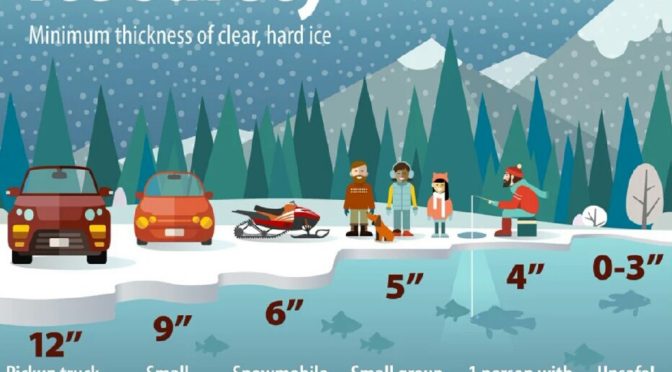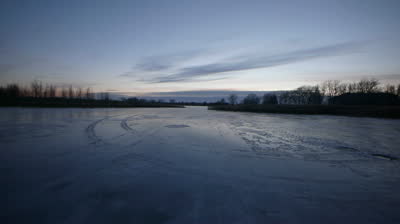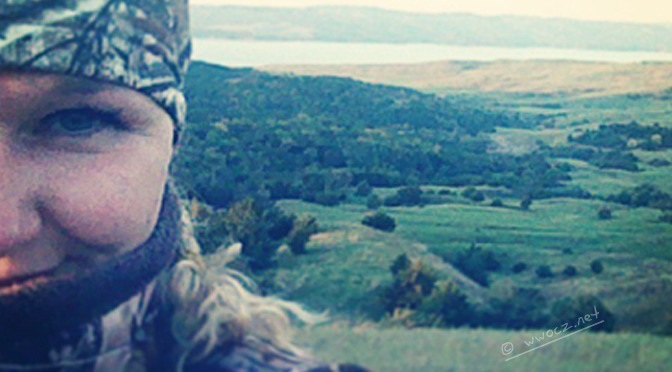While there really is no such thing as 100% safe ice, there are things you can do to be “safer” while out on the ice. Many factors go into the volatile making of lake and river ice. And just as many factors can cause it to become unsafe in the flash of an instant. Heading out early or going late in the season can prove deadly and just isn’t worth the 3 crappies you might catch.
Whether you’re ice fishing, ice skating, snowmobiling or hiking, stay safe this winter while out on the ice with these 6 tips.
1. Use caution aka Don’t be stupid. If the ice looks unsafe or you get that uneasy feeling in the pit of your stomach DON’T GO OUT ON THE ICE. It’s better to miss a day of fishing than end up breaking through the ice and drowning.
2. Prepare an emergency plan. Some of you might not want to take the time or think it’s uncool to create one. But nothing could be further from the truth. Know what to do if you do break through the ice. Carry an ice pick with you, keep a spare set of dry clothes in an airtight bag, carry a first aid kit (ice can be very sharp). Always let someone know where you’ll be and when to expect you home.
3. Understand the body of water you are on.
- Is it a spring fed pond? Be wary around the point of the feed. Spring water will be warm and a constant current and will cause thinner ice.
- Is it a river or creek that has free flowing water beneath the ice? River ice needs to be at least 20% thicker than lake ice to be safe.
- Is it a deep or shallow lake? Deeper water takes longer to freeze.
- Is the topography of the lake consistent or are there lots of deep holes? Water will be thinner over said deep holes.
4. Know the ice color:
- Light gray to black; ice that is melting (even if it’s below 32 degrees out), stay away.
- Opaque or very light; thin ice that is water logged. There are usually air pockets that are very unstable. Use extreme caution.
- Blue or Clear; Solid ice. Safe with a minimum of 4”
- Brown spotted ice or very slushy; the ice is thawing from the bottom up and the dirt/plant life is pushing upwards. Never go on ice that has a mottled appearance. It may look strong and thick at the top but the deception will lead to breaking through.
5. Check the ice depth every 100 yards. Large bodies of water seldom freeze over at a consistent rate. One area could be 5” thick while another area could be 12”.
6. A cordless drill with a long wood auger bit is a handy tool for quickly checking the depth of ice. Drill the hole and measure the ice with a tape measurer. (Remember to thoroughly dry the bit to prevent rust.)
Rules for clear lake ice*:
3” Single person on foot
4” group in single file
7 ½” 2 ton small passenger car
8” 2 ½ ton light truck
10” 3 ½ ton Medium truck or SUV
12” 8 ton Heavy truck
* For River ice you must add 20% to above figures. Slush ice does not count in above figures.
Discover more from The HuntFishTravel Show
Subscribe to get the latest posts sent to your email.




